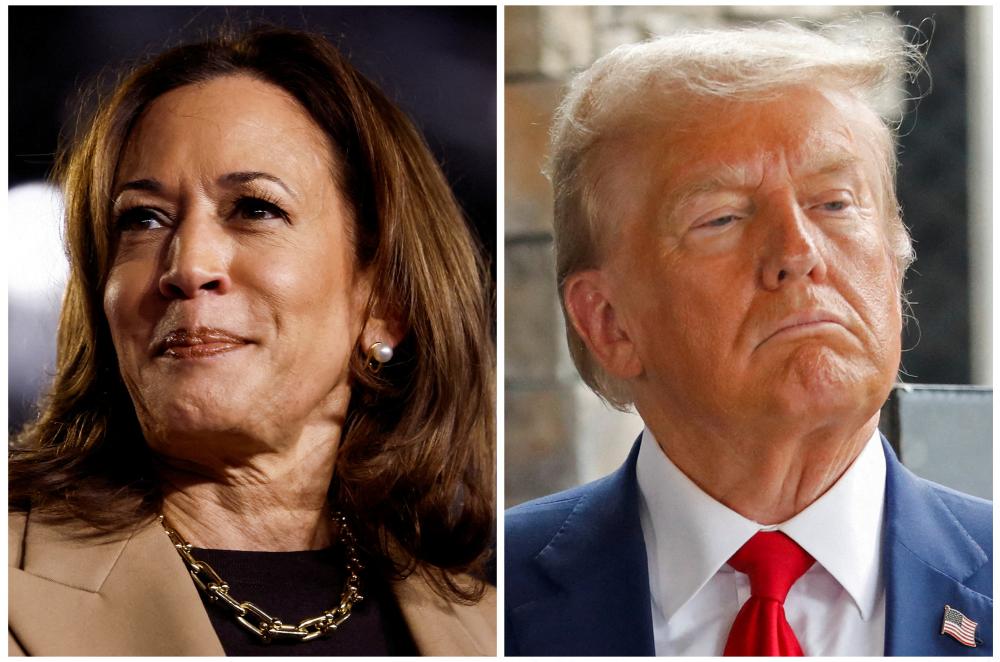
The US presidential election campaign enters its final weekend with polls showing Donald Trump and Kamala Harris in seemingly permanent deadlock and few clues as to which of them will prevail on Tuesday.
At the end of another unruly week that began with Trump’s racially charged rally in New York’s Madison Square Guardian and was punctuated by celebrity endorsements, misogynistic comments and insults about “garbage” being levelled left and right, the Guardian’s 10-day polling average tracker showed little change from seven days earlier, with voter loyalty to their chosen candidate appearing relatively impervious to campaign events, however seismic.
Nationally, Harris, the Democratic nominee, has a one-point advantage, 48% to 47%, over her Republican opponent, virtually identical to last week. Such an advantage is well with the margin of error of most polls.
The battleground states, too, remain in a dead heat. The candidates are evenly tied at 48% in Pennsylvania, often seen as the most important swing state because it has the most electoral votes (19). Harris has single-point leads in the two other blue-wall states, Michigan and Wisconsin, while Trump is marginally ahead in the Sun belt: up by 1% in North Carolina and 2% in Georgia and Arizona. In Nevada, his average advantage in the polls is less than a percentage point.
The latest polling has come against a backdrop of unprecedented levels of early voting in multiple states which, as of Friday, had seen about 65 million Americans already casting their ballots.
It is notoriously difficult to predict anything about future results from early voting, though some 58% of early voters in Pennsylvania aged 65 or over were registered Democrats, Politico reported, compared with 35% from the same cohort who were registered Republicans; the two main parties have roughly equal numbers of registered voters in the state among older adults. About 53% of the demographic voted for Trump in Pennsylvania in 2020, even while he lost the state to Joe Biden.
Trump, in contrast with four years ago, has encouraged his supporters to cast early ballots. That Democrats are turning out in greater numbers may be a positive indicator for them in a bellwether state where commentators have predicted turnout is key to the result. Democratic strategists have claimed they have a 10%-20% lead in senior voter turnout across the three blue-wall states.
But in a fractured political landscape that has featured threats of retribution from Trump, accusations of fascism and racism from Harris, and warnings that democracy itself is on the ballot, the bigger picture – that uniformity, over a prolonged period – has seasoned observers scratching their heads.
The polling-analysis site FiveThirtyEight’s simulator – based on a collection of national and state data – on Friday morning forecast that Trump would win 53 times out of 100 compared with 47 times for Harris was, again, similar to a week before.
In one late burst of positive news for Harris, a Marist poll on Friday held out the possibility that she could break the deadlock: it showed her leading Trump by 3% in Michigan and Wisconsin and 2% in Pennsylvania. Winning all three states probably represents Harris’s clearest path to the 270 electoral college votes needed to win the White House. But the results remained within the survey’s margins of error.
This near-monolithic picture, emerging from multiple polls, has triggered suspicions among some analysts of “herding” around state poll averages by pollsters cautious of being proved wrong for the third time running after significantly underestimating Trump’s support in 2016 and 2020.
Writing on NBC’s website, Josh Clinton, a politics professor at Vanderbilt University, and John Lapinski, the network’s director of elections, pondered whether the tied race reflected not the sentiments of the voters, but rather risk-averse decision-making by pollsters. Some, they suggested, may be wary of findings indicating unusually large leads for one candidate and introducing corrective weighting.
Of the last 321 polls in the battlegrounds, 124 – nearly 40% – showed margins of a single point or less, the pair wrote. Pennsylvania was the most “troubling” case, with 20 out of 59 polls showing an exact tie, while another 26 showed margins of less than 1%.
This indicated “not just an astonishingly tight race, but also an improbably tight race”, according to Clinton and Lapinski.
Large numbers of surveys would be expected to show a wider variety of opinion, even in a close election, due to the randomness inherent in polling. The absence of such variation suggests that either pollsters are adjusting “weird” margins of 5% or more, Clinton and Lapinski argued – or the following second possibility, which they deemed more likely.
“Some of the tools pollsters are using in 2024 to address the polling problems of 2020, such as weighting by partisanship, past vote or other factors, may be flattening out the differences and reducing the variation in reported poll results,” they write.
Either explanation “raises the possibility that the results of the election could be unexpectedly different than the razor-close narrative the cluster of state polls and the polling averages suggest”, they added.
Amid the uncertainty, one thing is certain: however close pollsters have depicted the contest for the past several weeks, as Harris and Trump go head to head in the final days of the most consequential US election in decades, something has to give.
EMEA Tribune is not involved in this news article, it is taken from our partners and or from the News Agencies. Copyright and Credit go to the News Agencies, email news@emeatribune.com Follow our WhatsApp verified Channel




